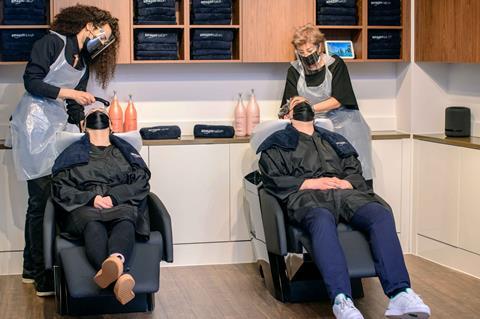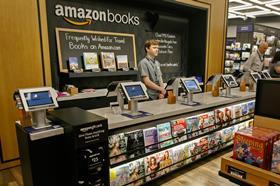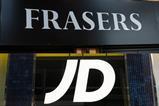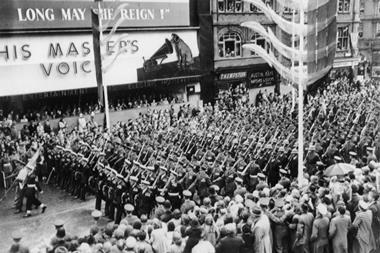It is a topic that has become a regular fixture of boardroom conversations over the past decade.

As bricks-and-mortar retailers seek to create a store experience that offers something unique and attractive to keep customers out of the clutches of online rivals, attention has focused on ’what Amazon can’t do’. Indeed, the WACD acronym has been scrawled on countless flipcharts and mentioned in hundreds of emails by retailers.
The issue they all have is that the list of things Amazon can’t do is shrinking, almost by the day.
The ecommerce titan has already rolled out a chain of bookshops in its native US; it operates its own TV and music streaming services; it acquired Whole Foods in 2017 and has since opened its own Amazon Go and Amazon Fresh grocery stores; and it launched its own online pharmacy service last November.
This week, the etailer embarked on perhaps its most unlikely brand extension to date. As revealed by Retail Week, Amazon will open its first hair salon, in London’s Spitalfields, in the coming weeks.
It’s a story that sparked plenty of quips on social media. “Amazon taking the ‘you can’t get a haircut online’ retort to heart,” BNP Paribas Real Estate’s James Child joked on Twitter.
One observer asked whether the Amazon salon “will bring up a list of haircuts that people like you have chosen”, drawing parallels to the ‘you might also like’ feature on its website.
And another suggested that Barnet would have been a more fitting location for Amazon’s first foray into this particular field.
But for Amazon’s retail rivals, the latest launch is no laughing matter.
Amazon salon is not just for haircuts and styling
As NBK Retail analyst Natalie Berg puts it, the initiative serves as “a reminder that Amazon is not a retailer – and certainly not a hair salon – but a tech company that likes to find ways to do stuff better”.
The salon will double up almost as a test-and-learn facility for Amazon to try out some of its latest in-store technology. Customers can point to any product on display that they are interested in, and digital screens will display information on that particular item. If they then want to purchase the product, they simply scan a QR code using their smartphones, which will direct them to the relevant product page on the Amazon website.
The space will also act cleverly as a marketing tool for some of Amazon’s other products and services outside hair and beauty. Visitors will be given Fire tablets to keep them entertained, allowing them to stream music or video while they have their hair cut and styled. Sound, of course, can be played through Amazon Echo speakers.
This is designed to be an experience – something that Amazon has never been renowned for. Its relentless rise has been driven by functionality, by convenience and by value. Experience was always the arena in which bricks-and-mortar retailers could win, using stores to enhance their USPs and build affinity between their brand and their customer. Now Amazon is attempting to do the same.
“A warning shot for retailers in all categories”
Amazon says the salon is a one-off, but it should serve as a warning shot for retailers in all categories. Think about it – theoretically, if it wanted to, Amazon could snap up any of the Debenhams or John Lewis stores being vacated and open up a department store of its own.

It already has relationships with fashion and homewares brands, supply relationships that could be extended into a physical format. It has a growing range of tech and entertainment products. It has bookstores. Amazon Fresh could be integrated into one of the floors to create a food hall. It has a pharmacy, and now a salon.
Okay, such a move appears highly unlikely, but certainly not beyond the realms of possibility. After all, Amazon’s ambition is to offer consumers everything they need at any stage of their life cycle – from cradle to grave, putting it crudely – without ever having to look outside its vast ecosystem. Why not test the idea of bringing that proposition together under a physical rather than a digital roof?
If the opening of a salon has reinforced anything, it is to expect the unexpected where Amazon is concerned. Absolutely nothing is off the table. If it spots a market or a product category that can be improved through its use of data and technology, it has both the cash and the ‘test-learn-fail fast’ culture to give it a try.
Even the best retailers, the market leaders, cannot afford to rest on their laurels with that threat hanging over their heads. They must continue to innovate to improve the customer experience. They must continue to think carefully about their brand positioning and how it needs to evolve to remain relevant among not just today’s shoppers, but tomorrow’s.
But perhaps most difficult of all, they must continue to seek out and exploit those remaining things that Amazon can’t do.































2 Readers' comments